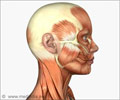A well-known heart protein has been found to be associated with Type 1 myotonic muscular dystrophy (DM1). Researchers at the University of Virginia Health Systems made this discovery.
A well-known heart protein has been found to be associated with Type 1 myotonic muscular dystrophy (DM1). Researchers at the University of Virginia Health Systems made this discovery.
DM1 is the most common form of muscular dystrophy in adults, and the second most common form of any skeletal muscle disease.The protein, NKX2-5, is a biomarker for heart stem cells, and is also very important for the normal development of the heart.
"Too little of it causes major cardiac problems including slow and irregular heartbeats," Nature Genetics quoted Dr. Mani Mahadevan, a human genetics researcher and Professor of Pathology, who led the study, as saying.
During the study, the researchers observed that mice and individuals with DM1 actually overproduce NKX2-5, yet experienced the same kind of heart problems associated with too little of it.
They believe that excessive NKX2-5 may help understand why 60 to 70 per cent of individuals with DM1 develop heart problems that cause their heartbeats to become slow and irregular, often putting them at the risk of sudden death and making them dependent on pacemakers.
Dr. Mahadevan and his colleagues involved the mouse model of DM1, and mice genetically engineered to produce less NKX2-5, in their study. They showed that reducing the excessive levels of NKX2-5 seemed to protect the mice from the heart problems.
Advertisement
"Usually, NKX2-5 is found only in the heart of adults," Dr. Mahadevan said.
Advertisement
Dr. Mahadevan believes that his team’s discovery may pave the way for a simple diagnostic test to follow a patient's response to potential therapies.
Myotonic muscular dystrophy is recognized as the first example of a disease caused by a toxic RNA. RNAs are intermediary molecules that convey the genetic code in the DNA to the rest of the cell. RNAs are normally "cut and pasted together" by a process called RNA splicing. It is currently thought that the toxic RNA causes DM1 by disrupting normal RNA splicing.
"Much of the research on DM1 is focused on factors that cause RNA splicing defects. Our work may provide explanations for pathogenic effects not accounted for by RNA mis-splicing," Dr. Mahadevan said.
He revealed that the latest work by his team was a follow-up of their previous research that showed that toxic RNA causes DM1, and that getting rid of it actually reversed the disease process.
The latest study by the research team, entitled ‘RNA Toxicity in Myotonic Muscular Dystrophy Induces NKX2-5 Expression’, demonstrate a new effect of RNA toxicity, and how this may cause cardiac conduction abnormalities.
Source-ANI
LIN/P











